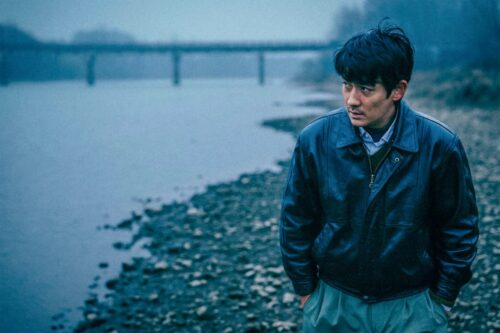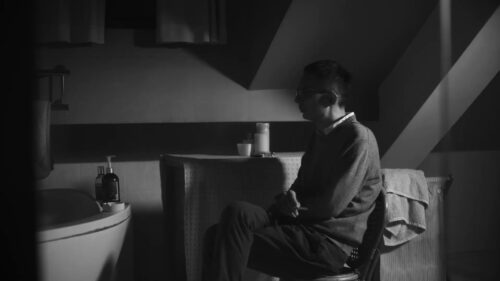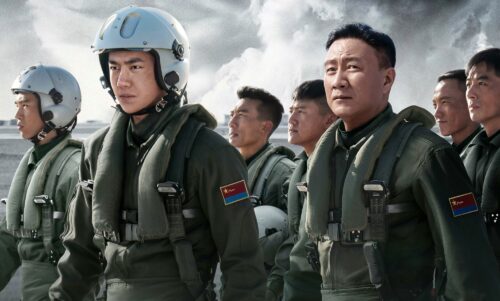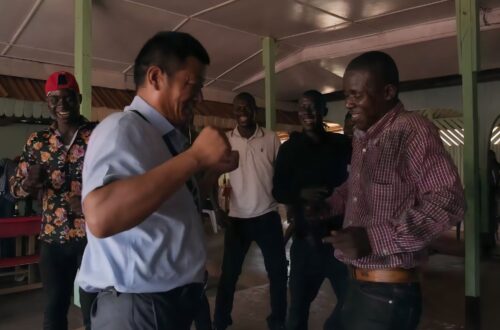How ‘Yellow Earth’ revolutionized Chinese film
Chen Kaige's 1984 debut film, Yellow Earth, defied the social realism of its day, revolutionizing the ways the Chinese watched and created films.


As a young man, the Chinese writer Kē Lán 柯蓝 (1920-2006) once took a trip from Yan’an to Shaanbei, the northern portion of Shaanxi Province. Ke was interested in folk music, and his mission was to find missing lyrics to the song “Lan Huahua,” a tune about an arranged marriage. When a storm broke out, Ke stayed with a local family and got to know the couple’s daughter. The girl wouldn’t tell Ke her name, but agreed to reveal it if Ke could help her see the army. Ke told the girl that he’d be back in three or four days to talk about it further.
When Ke returned, six days later, the girl was gone. She took her life by eating opium, just like the titular character of “Lan Huahua.” According to a shepherd boy, the girl — her name was Cuiqiao — was forced into an arranged marriage by her stepfather. Cuiqiao preferred death to life with a man she didn’t love. The incident deeply affected Ke Lan, and he would choose to memorialize it in his piece “Echo in the Deep Valley” (深谷回声 shēngǔ huíshēng).
In 1983, a script adapted from Ke’s work by Zhāng Ziliáng 张子良 caught the attention of filmmakers Hé Qún 何群 and Zhāng Yìmóu 张艺谋. He and Qun were recent graduates from the Beijing Film Academy, along with their friend Chén Kǎigē 陈凯歌. After graduating, Chen worked as an assistant director, but was ready to make his own movie. When he was offered Zhang’s script, Chen recognized some potential in the story. Because he’d never seen Shaanbei, Chen organized a trip there with He Qun, Zhang Yimou, and composer Zhào Jìpíng 赵季平.
The sights of the region, with its incredible river and rugged, arid land, astonished Chen. The Yellow River is regarded as a cradle of Chinese civilization, and nearby Yan’an also has a special place in Chinese history. Another source of inspiration was the people themselves. Chen observed in an interview with Richard James Havis that, although they were poor, “The people there live very simple lives and are extremely friendly and kind.”
After his excursion in northern Shaanxi, Chen spent an entire week rewriting Zhang Ziliang’s script. He clamped down on the story’s sentimentality, changing and adding different things. While the original had no mention of the Yellow River, and there was a focus on the color green, Chen’s take emphasized the river and the color yellow, so much so that he retitled the movie Yellow Earth (黄土地 huáng tǔdì). Filming was done on location, and lasted 60 days.
The plot of Yellow Earth is set in the spring of 1939, during the Second Sino-Japanese War. Gu Qing, a Communist soldier, comes to Shaanbei to collect folk songs. He stays with a local peasant, preaching Communist rhetoric and making friends with the man’s children: 10-year-old Hanhan and 14-year-old Cuiqiao. Cuiqiao is arranged to marry an older man in April, but she’s enraptured by Gu’s talk of equality and female soldiers in the Red Army. She wants to run away and join the Communists, so she makes a plan to cross the Yellow River. Her fate is ambiguous, but likely tragic.
Aside from its gorgeous cinematography by Zhang Yimou, capturing the mountains and deserts of Shaanbei, Yellow Earth’s ambiguity is what has made it special. When the Communists took control of China in 1949, Soviet-style social realism dominated mainland cinema. In these movies, there was a clear divide between good and evil. Soldiers and peasants were idealized, while heroes were often one-dimensional, Communist mouthpieces. Many stories were little more than propaganda, told with stale and moralizing dialogue. .
Of course, directors like Xiè Jìn 谢晋 were still able to create great films within this framework, and Fourth Generation filmmakers had also been creating new, interesting work after the Cultural Revolution. However, these conventions as a whole stifled creativity and innovation. Yellow Earth was bold; its story is conveyed primarily through images, not dialogue. Conversations happen off-screen, and gestures and periods of silence count more than words. The characters are real people: peasants who are kind yet stubborn and superstitious, a soldier who is more naive and idealistic than admirable. What the movie says is ultimately open-ended. Is it a sneaky jab at the Communist Party, an attack on tradition, or something else entirely? It’s vague enough to support various interpretations.
Due to its elusiveness, and its subversive tendencies, mainstream audiences initially didn’t know what to make of Yellow Earth when it was released in 1984. Some viewers were left confused, with one Beijing theater even refunding customers’ tickets and replacing the movie with something else. Professionally, a lot of older filmmakers had mixed or negative feelings. Chen’s contemporaries, however, were awe-struck. Director Tián Zhuàngzhuàng 田壮壮, speaking a few years later, would remark that Yellow Earth “represents the future of Chinese cinema now.”
The “future” was applauded when the movie played at the Hong Kong International Film Festival the next April. The enthusiasm would actually sell a million tickets in the city over six days, leading to a re-release in China that would mark Yellow Earth as one of the most popular movies of 1985. Western critics were equally impressed, and Chen’s debut was recognized as a launchpad for the rising Fifth Generation of Chinese filmmakers, a group that would also experiment with ambiguous narratives and vivid visuals.
While the movie has always had its critics — some believe Yellow Earth and other early Fifth Generation films were alienating and catered to foreign tastes — Tian Zhuangzhuang and other early adherents have been proven right. Yellow Earth defied the social realism of its day, revolutionizing the ways the Chinese watched and created films. Today, Yellow Earth is regarded as one of China’s greatest films, with filmmakers like Jiǎ Zhāngkē 贾樟柯 continuing to cite it as an influence.
https://www.youtube.com/watch?v=sEqfyZGYVrM
Film Friday is The China Project’s film recommendation column. Have a recommendation? Get in touch: editors@thechinaproject.com





